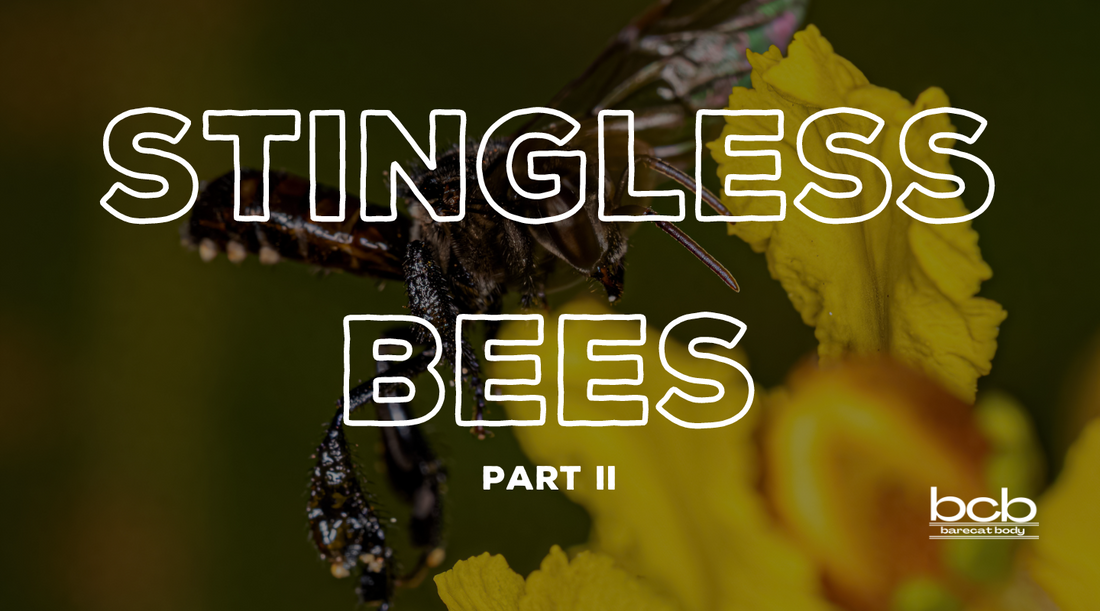
Part 2 f 3: Benefits of Stingless Bee Honey: Nutritional and Medicinal Properties
Share
Introduction:
Welcome back to the second part of our series on stingless bees. In this installment, we'll explore the nutritional and medicinal properties of stingless bee honey, highlighting its diverse benefits across different regions. From the Amazon Rainforest to Southeast Asia and beyond, stingless bee honey has been prized for its unique qualities and therapeutic potential.
Section 1: Nutritional Value of Stingless Bee Honey
Stingless bee honey is not only delicious but also packed with nutrients essential for human health. Let's take a closer look at the nutritional composition of this golden elixir and how it compares to honey produced by other bee species.
Carbohydrates and Sugars:
Like honeybee honey, stingless bee honey primarily consists of carbohydrates, with glucose and fructose being the predominant sugars. However, the precise composition may vary depending on the floral sources visited by the bees. Despite its sweet taste, stingless bee honey has a lower glycemic index compared to sugar, making it a healthier alternative for individuals managing their blood sugar levels.
Proteins and Amino Acids:
Stingless bee honey contains trace amounts of proteins and amino acids, albeit in smaller quantities compared to other sources of dietary protein. Nevertheless, these compounds contribute to the overall nutritional profile of honey and may play a role in supporting bodily functions and tissue repair.
Vitamins and Minerals:
Stingless bee honey is rich in vitamins and minerals, including vitamin C, B vitamins, calcium, magnesium, and potassium. These micronutrients have various health benefits, such as supporting immune function, promoting bone health, and regulating blood pressure.
Section 2: Medicinal Properties of Stingless Bee Honey
In addition to its nutritional value, stingless bee honey has been prized for its medicinal properties for centuries. Traditional healers and modern researchers alike recognize its therapeutic potential in treating a wide range of ailments.
Antimicrobial Activity:
Stingless bee honey exhibits potent antimicrobial properties, thanks to its high sugar content, low pH, and the presence of antimicrobial peptides and enzymes. Studies have shown that it can inhibit the growth of bacteria, fungi, and even some viruses, making it a valuable natural remedy for wound care and infection control.
Anti-inflammatory Effects:
Chronic inflammation is linked to various health conditions, including arthritis, cardiovascular disease, and gastrointestinal disorders. Stingless bee honey contains bioactive compounds that possess anti-inflammatory properties, helping to alleviate inflammation and reduce the risk of chronic diseases.
Antioxidant Capacity:
Antioxidants play a crucial role in neutralizing harmful free radicals and protecting cells from oxidative damage. Stingless bee honey is rich in antioxidants, including flavonoids, phenolic compounds, and vitamin C, which help combat oxidative stress and support overall health and longevity.
Conclusion:
In this second part of our series, we've explored the nutritional and medicinal properties of stingless bee honey, highlighting its potential to promote health and well-being. Join us in the final installment, where we'll delve into the regional variations of stingless bee honey and its cultural significance in different parts of the world.
